Advertisement
100 Miles Of Rope And A Half-Million Knots — Say Hello To Boston's New Piece Of Public Art
Resume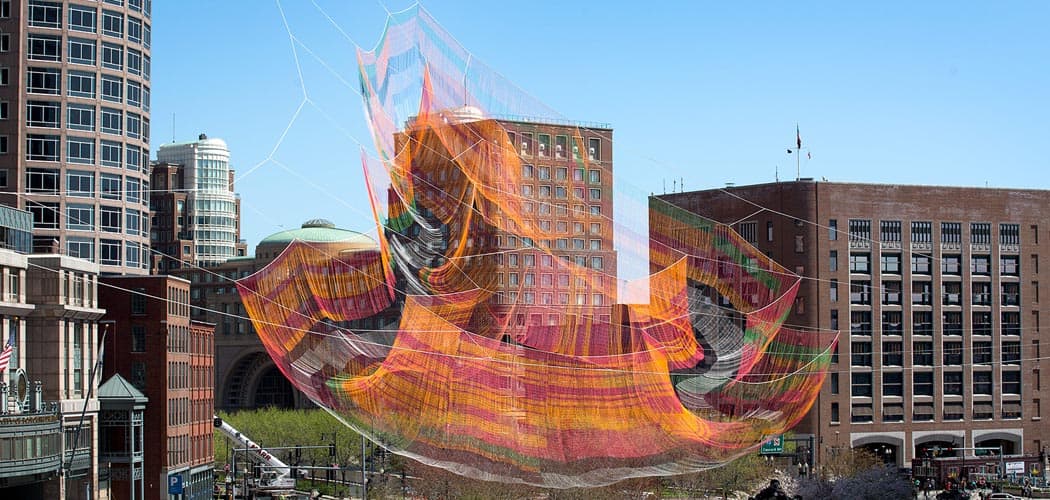
It's hard to miss Janet Echelman's massive new public art project on the Rose Kennedy Greenway. The award-winning Brookline resident's 2,000-pound sculpture is suspended between three skyscrapers and appears to be floating above the park.
It was no small feat to install the Greenway Conservancy's latest effort in its quest to bring more ambitious public art to Boston.
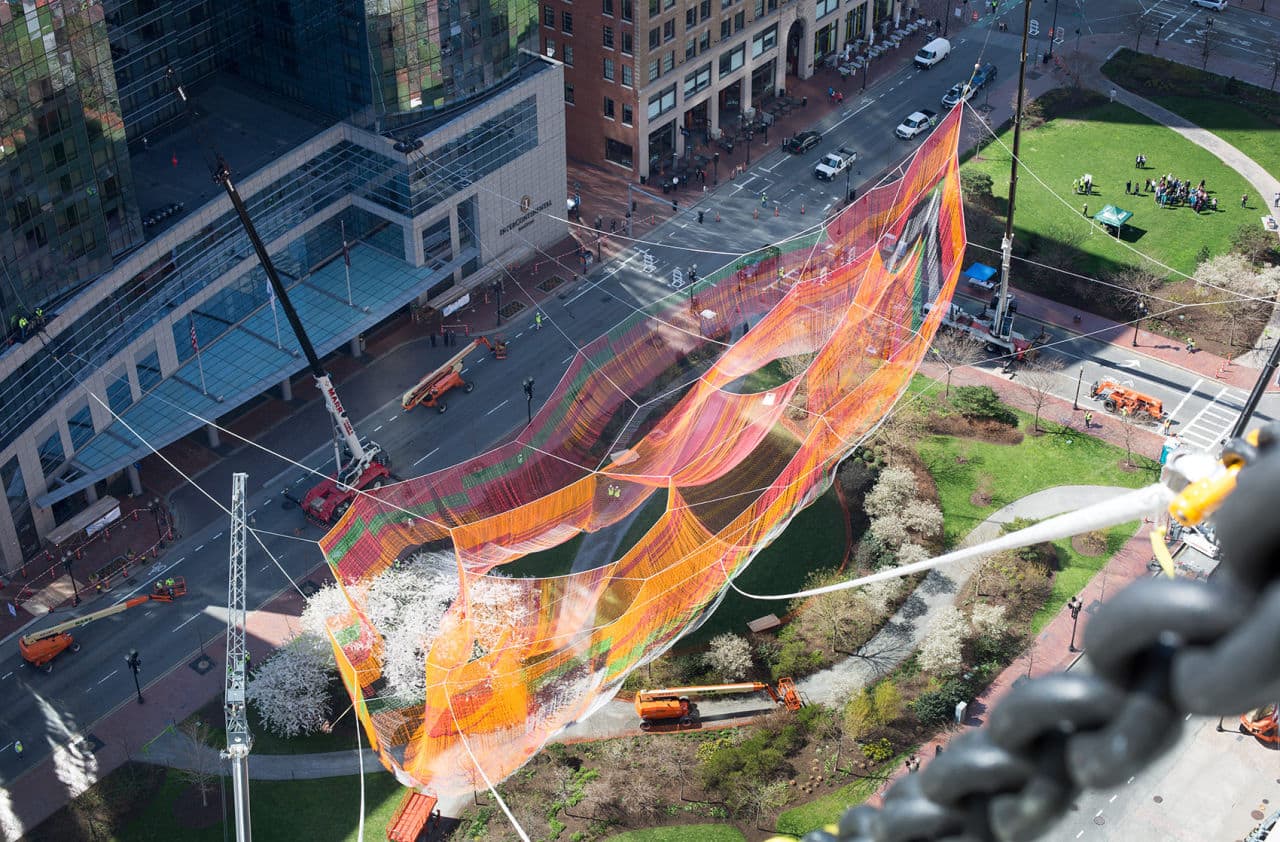
Police redirected traffic away from closed-off streets around the Greenway while six cranes did a ballet beginning in the wee hours of Sunday morning. About 50 tradesmen with Shawmut Design and Construction worked to attach and shore up Echelman's sculpture to moorings embedded in the the InterContinental hotel, One International Place and 125 High St. The looming work resembles an almost-half-acre-sized hammock or colorful fishing net. In the midday sunlight it shimmered like an incredibly sturdy gossamer.
“It's more than 100 miles of rope and a half-million knots,” Echelman said, and those reinforced ropes are 15 times stronger than steel.
The prolific artist and Guggenheim recipient has used them for her signature-style works in other cities around the world, including Amsterdam, Sydney and Vancouver.
Lazlo Boro was visiting Boston this weekend from Rochester, New York, and said he made a beeline to the Greenway when he read about the highly orchestrated installation.
“I love the color in it,” he remarked. “I love the fact that it's not going to catch too much wind — just move with the wind. It kind of makes a visual interpretation of the wind."
Then he asked, “I'm just wondering whether the wind is going to make a mess of it?”
“I just think it's really amazing how they pulled the whole thing off,” Brooklyn resident Chanie Kaminker marveled.
Like a lot of people, Kaminker and her friend got horizontal on the grass below the sculpture to gaze at it from below.
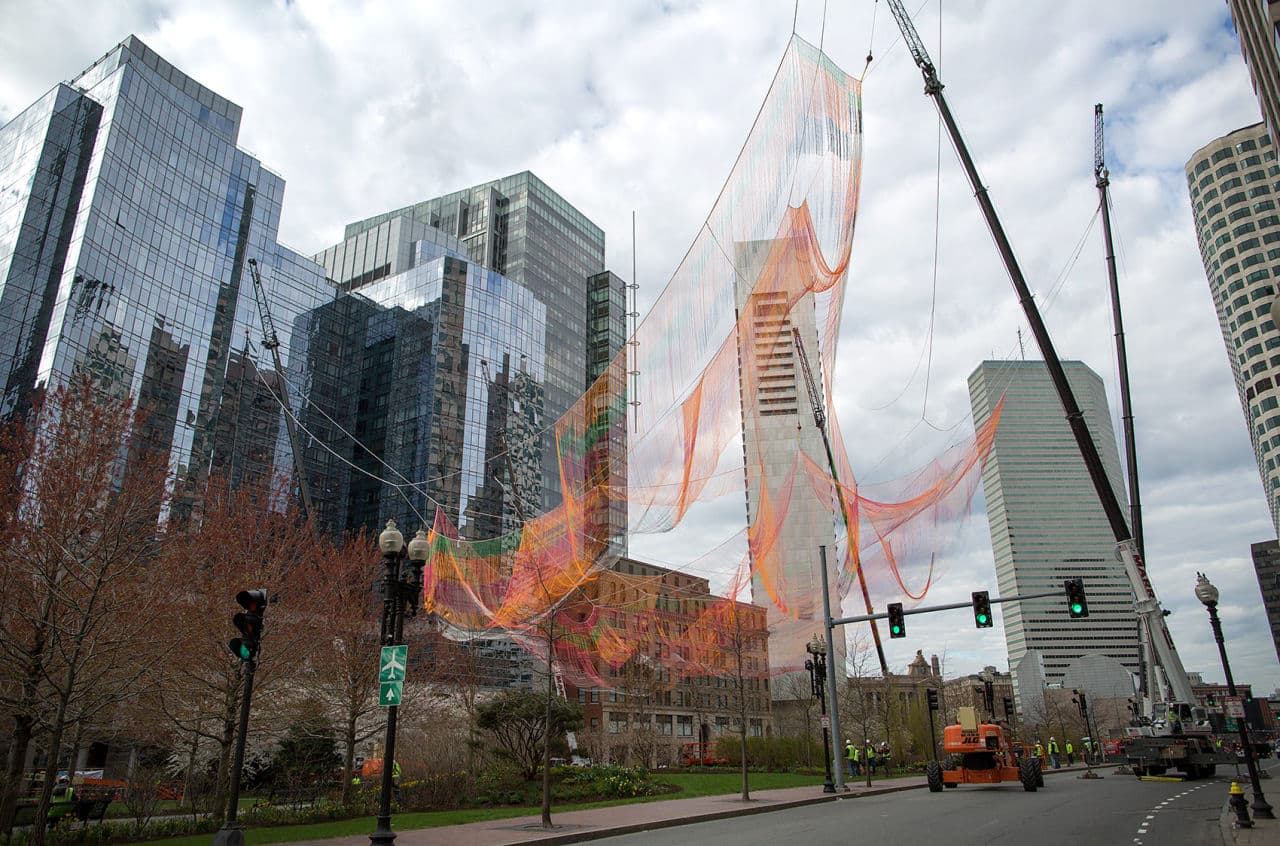
“We were just Googling how it was done and all the engineering that went into it — the local wind forces and all that," she said. "It's not only beautiful, it's pretty smart.”
The work is so smart it has its own custom-designed software that helped engineers make sure it holds up to gales that come the sculpture's way. Standing inside the InterContinental hotel, structural engineer Patrick McCafferty, of the firm Arup, said they developed algorithms to help fit the artist's vision into the environment.
“Our job was to figure out which of these buildings on the Greenway had enough potential energy to withstand the hundreds of thousands of pounds of force that we're putting on them when the wind is blowing,” he said. “The sculpture is embodying the energy of the Greenway itself, which is really, really spectacular from an engineer's perspective.”
McCafferty also says the fact that Echelman's piece moves dynamically in the wind makes it more complex to design than a static building. This is his firm's fifth project with Echelman, but the engineer says it represents a first in terms of level of community engagement that this one required.
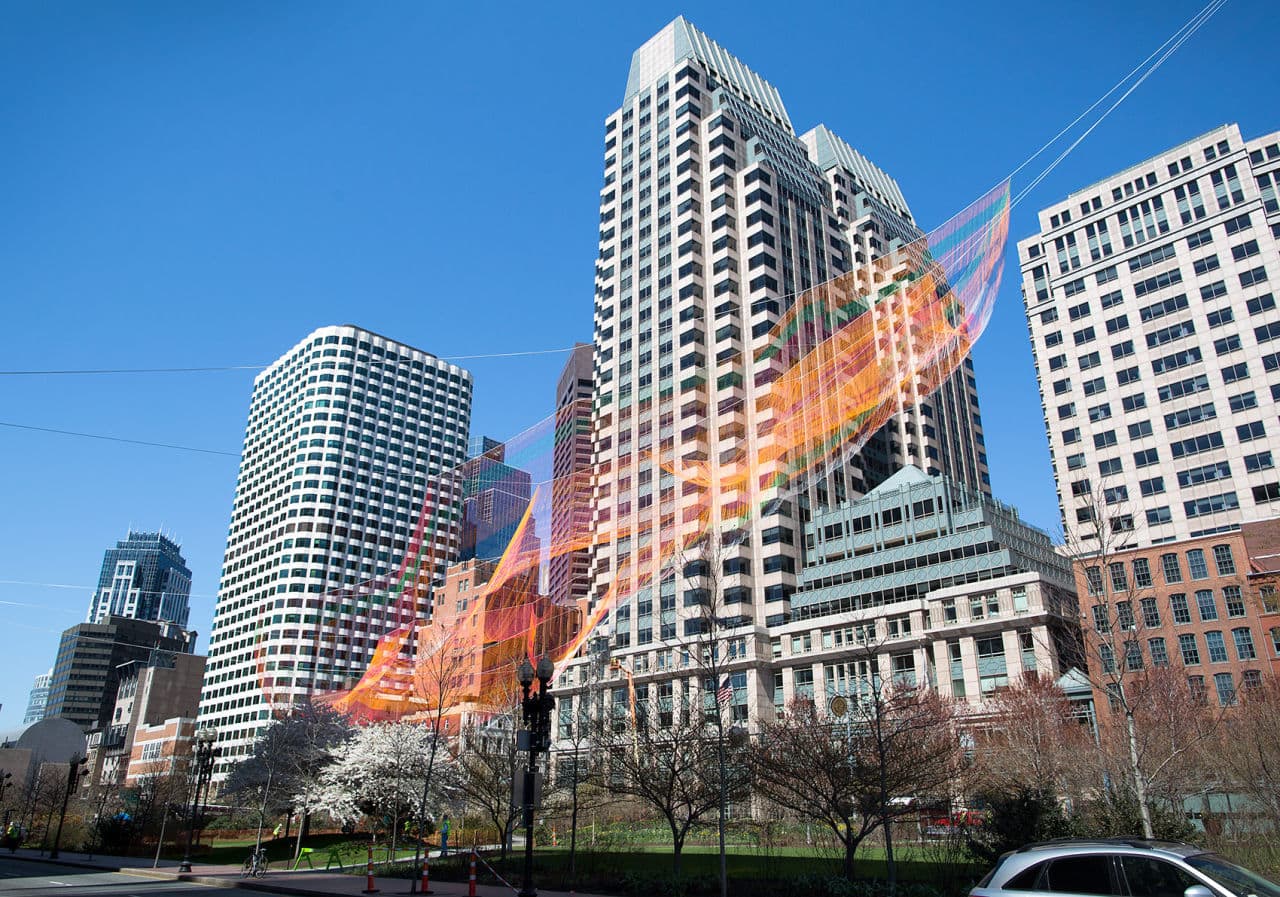
“We knew getting in that it would require a lot of coordination and a lot of collaboration,” said Jesse Brackenbury, executive director of the Greenway Conservancy.
The organization worked with a slew of private and public partners, including the city of Boston, the Massachusetts Department of Transportation and building owners to make this approximately $1 million installation happen.
Brackenbury recalled how the conservancy wanted a public artwork that evoked the history of a physical space that was notoriously ripped in half for construction of the Central Artery.
“When we requested proposal from artists we asked for a piece that would reconnect the city — as the Greenway had reconnected the city — and so Janet's vision was to literally knit the city back together,” he said.
“The fabric is the history of the city,” Echelman said. She conceived the work as something that would unite the city on many levels.
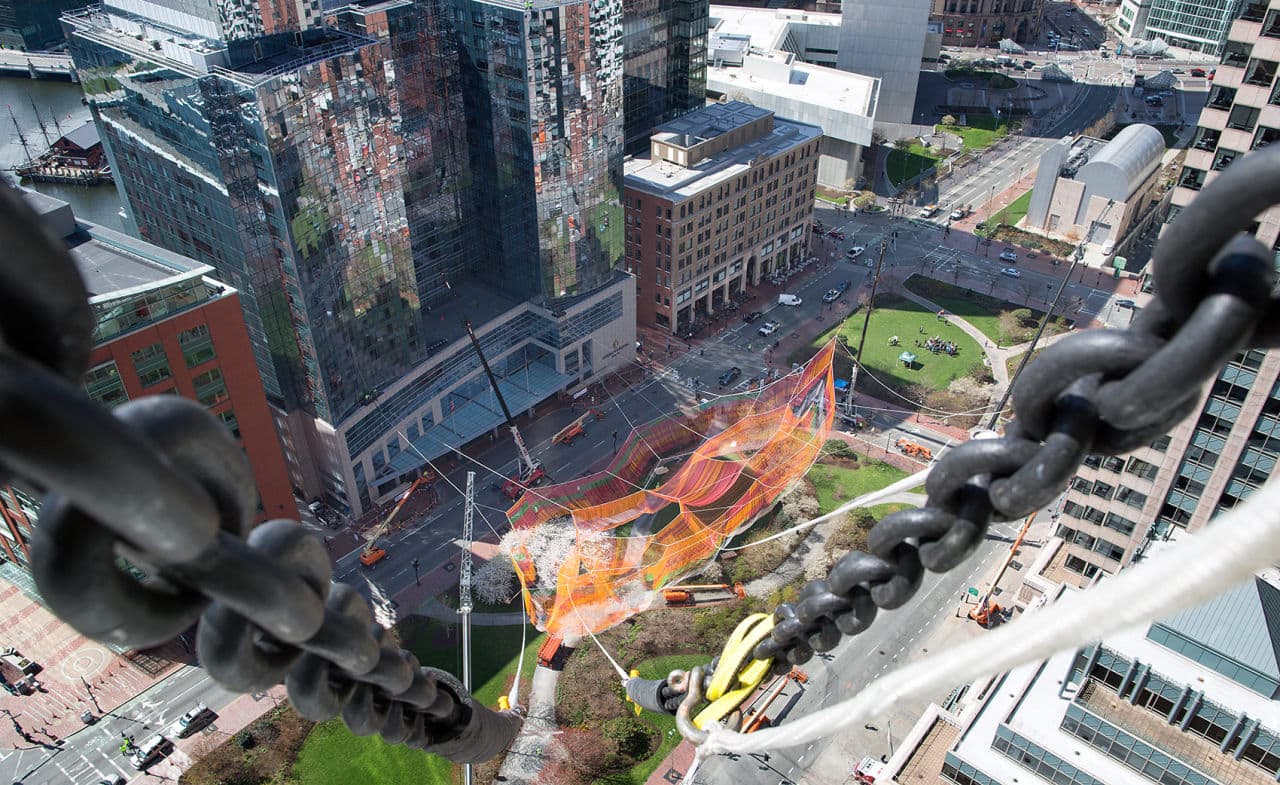
During her scoping-out phase, she visited each of the buildings she thought she could attach to.
“I went to 125 High St.,” she recalled, “and the custodial staff said, 'Do you want to come down to the basement and see the wall?' ”
When Echelman asked why, they said, “Because the granite blocks were the original seawall when John Adams had his office here."
Echelman added, before the land was filled in, the very spot she stood was Boston Harbor.
“This is where the boats were tied up — like in the 1700s, the boats full of crates of tea,” she mused.
The sculpture's net-like form evokes Boston's maritime history, but it also speaks to Echelman's original inspiration to start making art with rope tied into knots. Early in her career she says she was teaching painting in a fishing village in India, but the pigments disappeared. Echelman looked over at the men working in the boats and had an epiphany.
Going back to the reflecting on the Greenway sculpture, Echelman jumped from John Adams' time to the 20th century when Boston officials cut a highway through the city's dense downtown.
“And they were so proud of it at that time," she said. "And then at a different time we wanted to reclaim this space from the automobile and bring it back to the people and here we are standing on a beautiful, grassy Greenway looking up at art.”
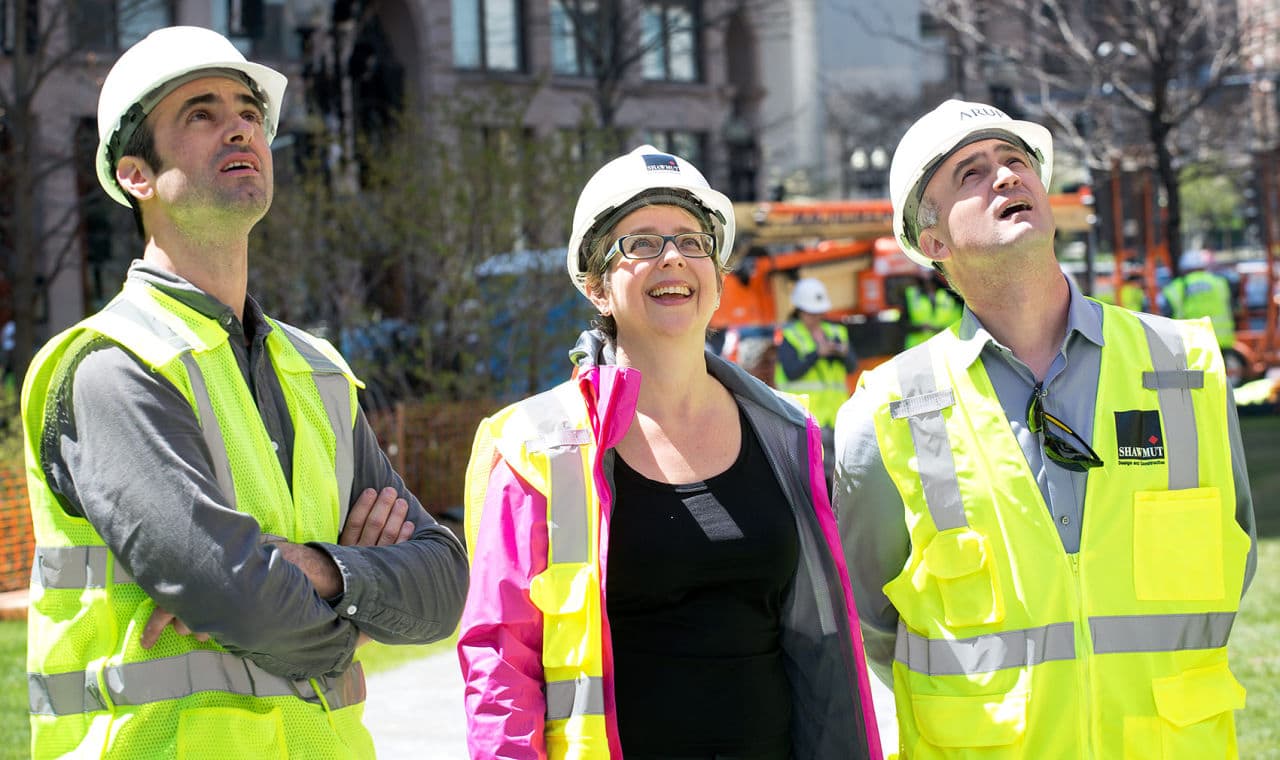
“It literally is living, it's breathing, it's moving, it's changing — in the wind, in the rain, in the light, at night,” Greenway curator Lucas Cowen said. He calls this installation “a coming out party” for more challenging public art that both honors and breaks away from its past.
“I would say that Boston is typically known more for its traditional statues — mostly in bronze,” the former curator of Chicago's famed Millennium Park explained, “and to think of a billowing, fabric structure hung in the air, one might not suspect or see that or feel that would ever come to Boston.”
Dave Scofield of Allston stumbled on the sculpture and shared a simple response: “I think it makes the city more beautiful.”
Echelman has her own hopes for what people will get out of experiencing her new sculpture in the context of its hard-edged, urban surroundings.
“It is soft, it is moving and yielding to the changes of the wind and sun,” she said. “It just opens up the question that everything could be different. Anything is possible.”
Some people have expressed concern about her net-like sculpture trapping wayward birds, but the project coordinators say ornithologists were consulted. The piece was designed to survive wind and rain but not snow, so it's scheduled to come down in late-September or October.
For the rest of this week the team will be tweaking the LED lighting system that will illuminate the orange and hot pink form before the official public opening party on May 11.
